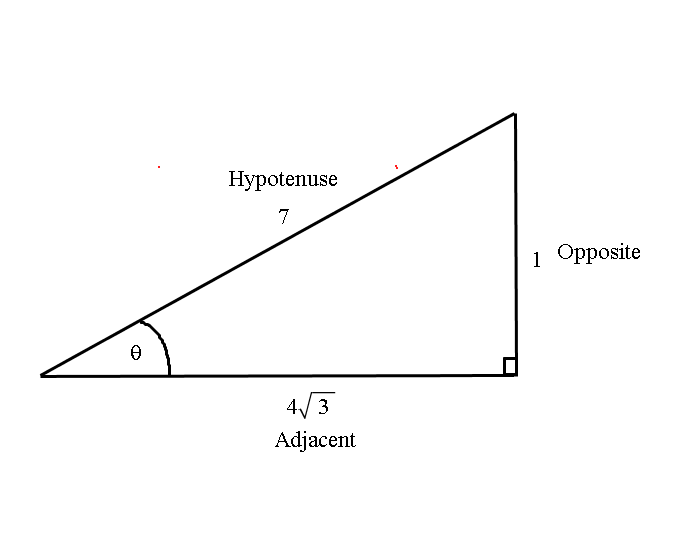
First we define the trigonometric functions in relation to the right angled triangle:
#sintheta=("opposite")/"hypotenuse" #
#costheta ="adjacent"/"hypotenuse"#
#tantheta="opposite"/"adjacent"#
#csctheta="hypotenuse"/"opposite"#
#sectheta="hypotenuse"/"adjacent"#
#cottheta= "adjacent"/"opposite"#
We have:
#sintheta = 1/7#
Looking at the right triangle in the diagram, this gives us:
#"hypotenuse"=7#
#"opposite" = 1#
By Pythagoras' theorem.
#("hypotenuse")^2=("opposite")^2+("adjacent")^2#
#7^2=1^2+("adjacent")^2#
#"adjacent"=sqrt(7^2-1^2)=sqrt(48)=4sqrt(3)#
#:.#
#sintheta=("opposite")/"hypotenuse" =color(blue)(1/7)#
#costheta="adjacent"/"hypotenuse"=color(blue)((4sqrt(3))/7)#
#tantheta="opposite"/"adjacent"color(white)(8.8)=1/(4sqrt(3))=color(blue)((sqrt(3))/12)#
#sectheta="hypotenuse"/"adjacent"=7/(4sqrt(3))=color(blue)((7sqrt(3))/12)#
#csctheta="hypotenuse"/"opposite"=7/1=color(blue)(7)#
#cottheta= "adjacent"/"opposite"=(4sqrt(3))/1=color(blue)(4sqrt(3))#
Notice that:
#csctheta=1/sintheta=1/(1/7)=7#
#sectheta=1/costheta=1/((4sqrt(3))/7)=(7sqrt(3))/12#
#cottheta=1/tantheta=1/(sqrt(3)/12)=4sqrt(3)#

